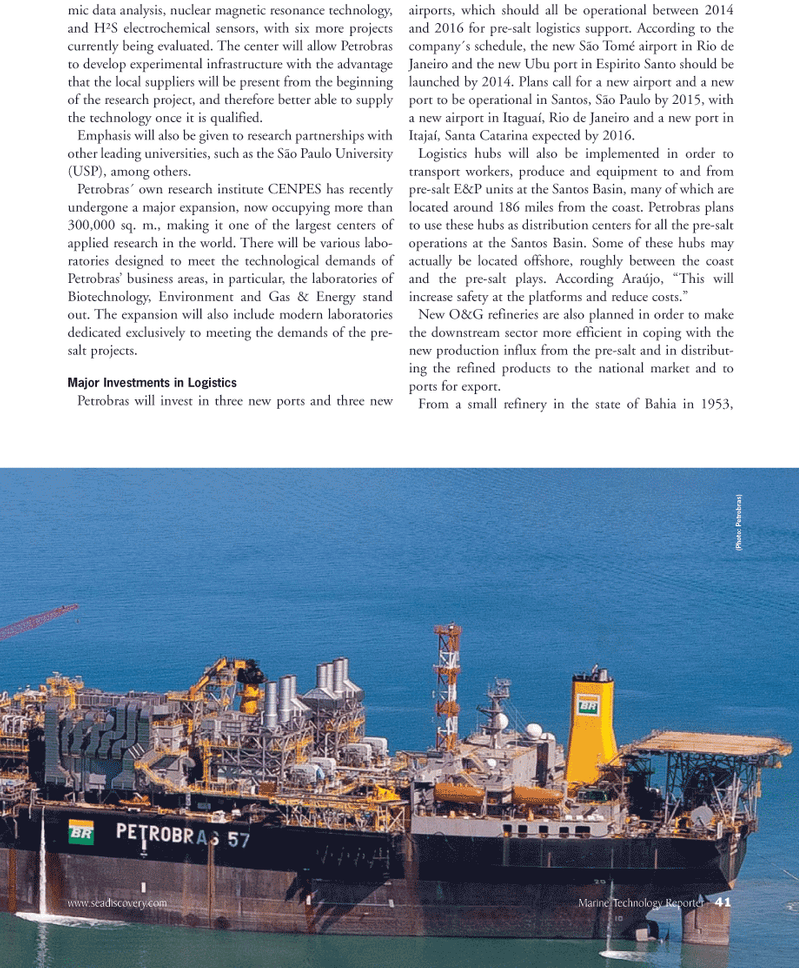
Page 41: of Marine Technology Magazine (January 2011)
Marine Salvage & Recovery
Read this page in Pdf, Flash or Html5 edition of January 2011 Marine Technology Magazine
www.seadiscovery.com Marine Technology Reporter 41 mic data analysis, nuclear magnetic resonance technology, and H²S electrochemical sensors, with six more projects currently being evaluated. The center will allow Petrobras to develop experimental infrastructure with the advantage that the local suppliers will be present from the beginning of the research project, and therefore better able to supply the technology once it is qualified.
Emphasis will also be given to research partnerships with other leading universities, such as the São Paulo University (USP), among others.
Petrobras´ own research institute CENPES has recently undergone a major expansion, now occupying more than 300,000 sq. m., making it one of the largest centers of applied research in the world. There will be various labo- ratories designed to meet the technological demands of
Petrobras’ business areas, in particular, the laboratories of
Biotechnology, Environment and Gas & Energy stand out. The expansion will also include modern laboratories dedicated exclusively to meeting the demands of the pre- salt projects.
Major Investments in Logistics
Petrobras will invest in three new ports and three new airports, which should all be operational between 2014 and 2016 for pre-salt logistics support. According to the company´s schedule, the new São Tomé airport in Rio de
Janeiro and the new Ubu port in Espirito Santo should be launched by 2014. Plans call for a new airport and a new port to be operational in Santos, São Paulo by 2015, with a new airport in Itaguaí, Rio de Janeiro and a new port in
Itajaí, Santa Catarina expected by 2016.
Logistics hubs will also be implemented in order to transport workers, produce and equipment to and from pre-salt E&P units at the Santos Basin, many of which are located around 186 miles from the coast. Petrobras plans to use these hubs as distribution centers for all the pre-salt operations at the Santos Basin. Some of these hubs may actually be located offshore, roughly between the coast and the pre-salt plays. According Araújo, “This will increase safety at the platforms and reduce costs.”
New O&G refineries are also planned in order to make the downstream sector more efficient in coping with the new production influx from the pre-salt and in distribut- ing the refined products to the national market and to ports for export.
From a small refinery in the state of Bahia in 1953, (Photo: Petr obras)

 40
40

 42
42
